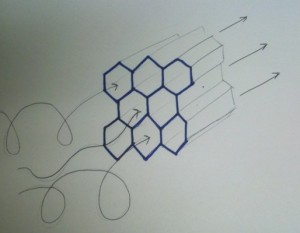Dear Fellow Basement Scientists,
Ever wonder why textbooks are so long? Well, I figured it out! Its because there is a lot of information out there to learn and it takes quite a few pieces of paper to fit it all. Well, this blog post is a little longer, though not quite textbook length, because there is a lot of information required in applying that textbook knowledge to building our wind tunnel.
Its time for another day in the lab (basement). Lets review our situation: We built the tunnel, legs for the tunnel, and finished the bell mouth including the honeycomb. Before we go on to the fan and diffuser, we can’t forget the minor detail of accessing the inside of the wind tunnel once it’s built. We must have an opening so we can put our specimens into the wind tunnel. Otherwise we would have a very fancy and long fan. I was hoping for more than that.
